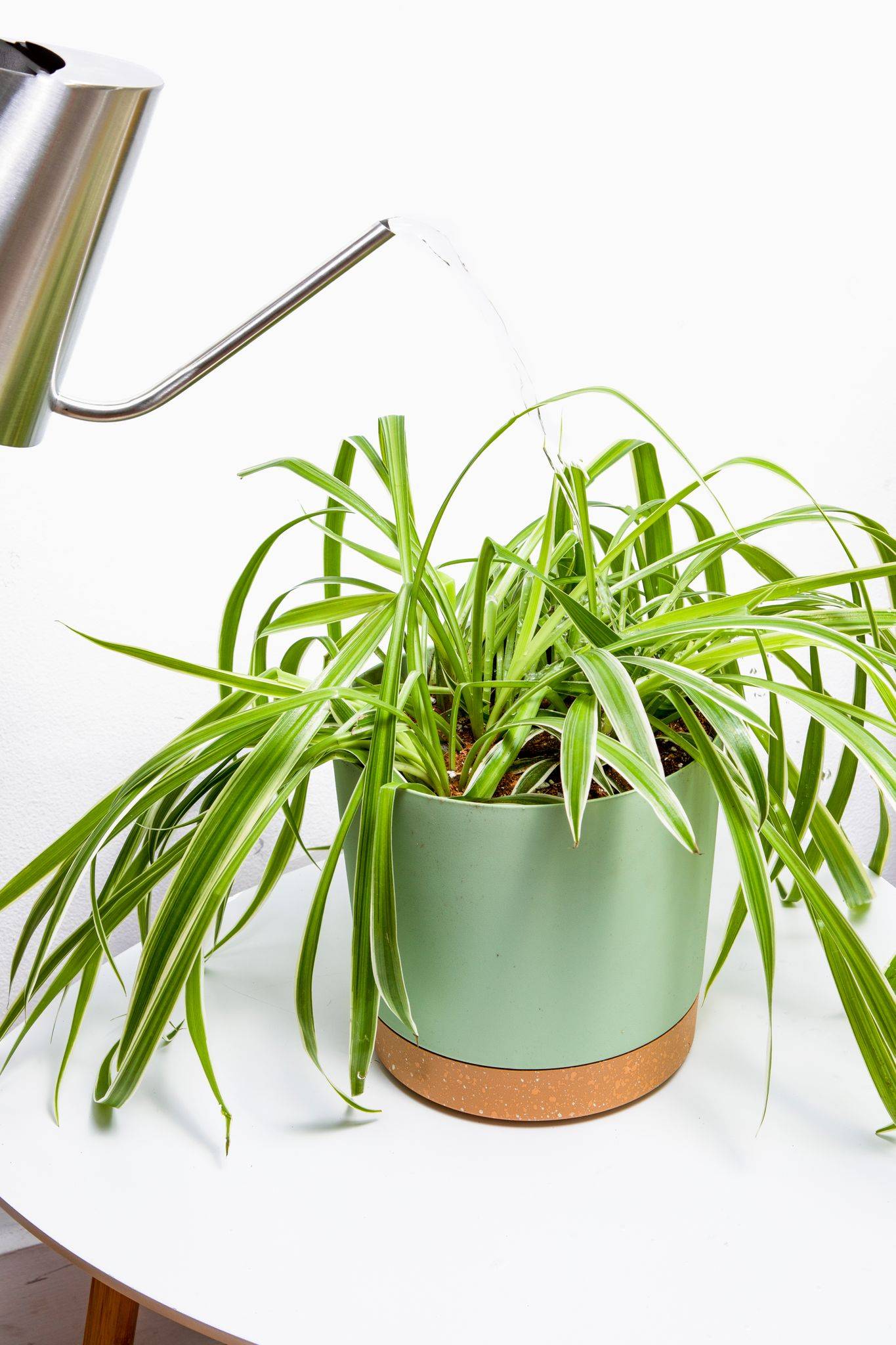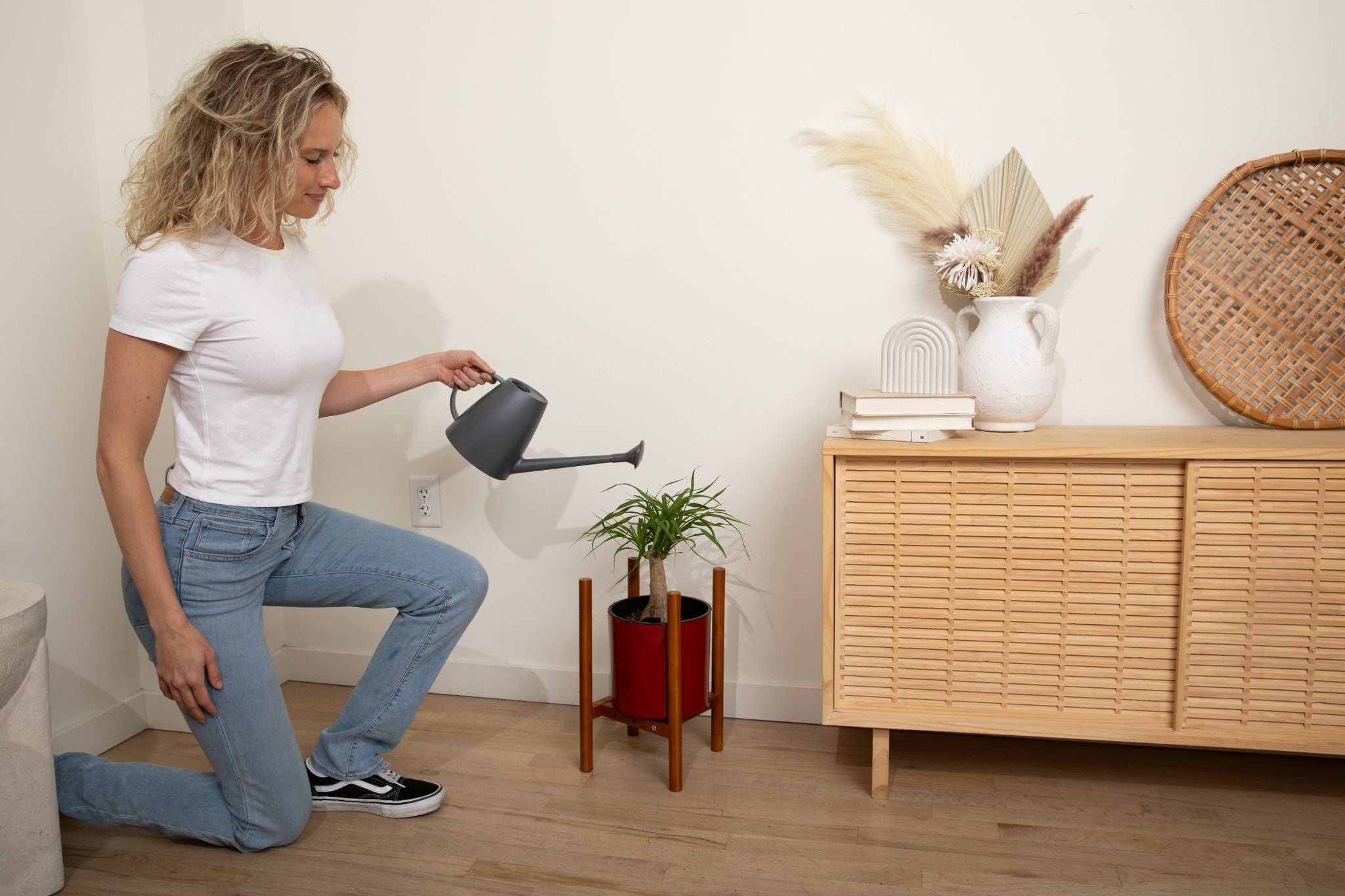Houseplant Care
Spider Plant Care: 6 Simple Steps

Spider Plant in a rePotme Contemporary Pot
How to Care for your Spider Plant
The Spider Plant, or Chlorophytum comosum, is causing quite the commotion in the houseplant world. These popular plants have found their way into millions of homes and are statistically likely to be in yours, as well! In this article, we will be covering the easy-to-follow basics of getting started with your very own Spider Plant!
1. When to Transplant your Spider Plant
Firstly; what we need is a plant. You may find yourself with a rescue from a big-box store that’s seen better days. How it got to this point doesn’t matter so much as its life going forward. With your new well-ventilated pot and soil on hand, gently gather the leaves as if gathering hair for a ponytail and lift carefully. The roots are thick and tuberous and hold together well. Gently rinse the root system under running water coming out at low intensity. Try to get as much of the old soil out of the roots as possible without bending them to excess. Old soil can have an unbalanced pH, pathogens, or nutritional deficiencies. With a clean Spider Plant in hand, gently place them in their new pot and carefully scoop in your new soil.
After providing a fresh fill of soil, eventually the new soil will also become old soil, so it is good practice to repot after a year. As plants eat nutrients from the soil and puts waste into it, the pH changes and makes the soil less livable to be in.
To meet your Spider Plant’s needs, we fresh-mix to order our Spider Plant Imperial Potting Soil Mix! If you don’t have a well-ventilated pot on hand, we have a lot of pots to choose from.
2. Make Sure Your Plant Hasn't Outgrown its Container
There comes a time when Spider Plants outgrow and have to leave the nest. They are fairly good at communicating as when it is time to move on to a bigger home, their roots will rise out of the top of the pot. At this point when it is time to transplant and they are moved to an accommodating size of pot, they can be suspended in the air by our Hand-Woven Macrame Hangers!
3. Even Creatures of the Night Need Light
One of the benefits of suspending plants via macrame hanger is the ease of access to light. Too little light may result in leaves getting pale. Inversely, too intense of light may cause burning. Spider Plants fare best when placed in a bright area with indirect sunlight.
If you are in an area with low exposure to natural light, consider picking up a grow light.
4. This Spider Likes the Spout
Once a week you may find your Spider a tad parched. They are used to having slightly moist soil most of the time, but are usually okay if you miss a watering. Their soil needs to be watered directly, which can be a challenge as the leaves are in the way. To water under the leaves and into the soil, a watering can with a straight and narrow spout gets everything where it needs to go. To make watering your Spider Plant easier, we carry both plastic and stainless steel watering cans!
While water is vital to life, too much water can actually harm your plant. This is where drainage and ventilation comes in. Allowing excess water to leave through the bottom and letting air through the sides drastically reduces risk of infection and root-rot. We design our pots to promote drainage and provide excellent fresh air exchange.
5. Check for Pups (Baby Spider Plants)
The Spider Plant is named for its notable feature of growing leg-like offshoots called “pups.” These ‘legs’ can themselves be their own Spider Plants! They can be removed gently with a sanitary cutting tool such as our disposable scalpel. To get the new roots going, the pups should be secured upright with the exposed end of the stem in water. Roots should form within two weeks, at which point they may be directly potted in a small pot with soil.
6. Feed Your Spider Plant
Spider Plants are not ravenous eaters, they can thrive on infrequent feeding. They only need to be fed monthly to bimonthly, and don’t need feeding during the Winter. Too much fertilizer can result in browning leaves or burnt tips. They do well with a balanced fertilizer such as our FEED ME! Houseplant Food. If fertilizer burn does occur, repot and carefully trim the damaged leaves with a sanitary tool such as our rePotme pro snips with stem notches that have been disinfected with alcohol or heat. If some healthy leaves get too long, it’s okay to trim them back. Spider Plants are very adept at regeneration!
Spider Plants are the ever-so-slightly macabre gift that keeps on giving. It shouldn’t be long before this houseplant crawls their way into your heart and finds a forever-home in yours!

